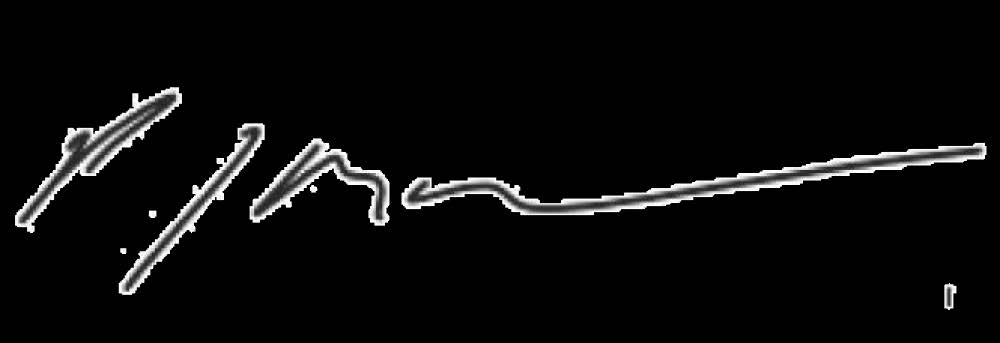 MEMORANDUM OF UNDERSTANDING
BETWEEN
AUCKLAND TRANSPORT
&
NZ POLICE
For shared use of
Closed Circuit Television (CCTV) Systems
MEMORANDUM OF UNDERSTANDING
BETWEEN
AUCKLAND TRANSPORT
&
NZ POLICE
For shared use of
Closed Circuit Television (CCTV) Systems
27 June 2022
V4.0

 Parties
Parties
1.
This MOU is between:
a) Auckland Transport (“AT”); and
b) New Zealand Police (“NZ Police);
collectively referred to as “the Parties”.
Term
2.
This interim MOU commences on the date it has been signed by the Parties and
continues in effect until it is terminated in accordance with clause 43 or 44 (as
applicable).
Purpose and Status of this MOU
3.
The purpose of this MOU is to record the mutual understanding, expectations and
arrangements between the Parties around:
a) the basis for sharing the use of CCTV systems between them;
b) what CCTV systems they will share the use of; and
c) how they will manage the shared use of the CCTV systems.
4.
This MOU confirms the arrangements between the Parties based on a spirit of
goodwill and cooperation. It is intended to constitute and create legally binding and
enforceable obligations on the Parties.
5.
This MOU is not an Approved Information Sharing Agreement under the Privacy
Act and does not authorise any breach of the Information Privacy Principles in that
Act.
Scope of this MOU
6.
This MOU is intended to cover the Parties’ use of the shared CCTV systems and
each Party’s access to CCTV footage captured by the shared CCTV systems to
support each Party’s access to CCTV footage for their own individual lawful
functions and purposes.
7.
NZ Police and the NZ Transport Agency are parties to a separate memorandum of
understanding allowing the NZ Police to use the NZ Transport Agency’s CCTV
systems and CCTV footage in accordance with the arrangements set out in that
memorandum. The Parties acknowledge AT’s entry into this MOU is premised on
that memorandum of understanding between the NZ Police and the NZ Transport
Agency remaining extant during the term of this MOU. This MOU does not cover
the sharing of recorded CCTV footage captured by any CCTV camera that does
Page 2 of 10


not form part of the shared CCTV system and held by any individual Party to any
other Party (for example, as may be requested and/or required under the Local
Government Official Information and Meetings Act 1987, Official Information Act
1982 or the Privacy Act 2020). Requests for sharing or disclosure of any CCTV
footage held by any Party outside of the shared CCTV system are to follow the
processes and protocol(s) separately agreed between the Parties.
Interpretation
8.
In this MOU, unless the context otherwise requires, the following terms have the
corresponding meanings set out below:
access
in relation to CCTV footage, may include viewing,
controlling the capture of, or collecting the
footage
ATOC
Auckland
Transport
Operations
Centre
(operated under joint partnership by AT and
Waka Kotahi with collective responsibility for
managing the upper North Island State Highway
network and all other transport operations in the
Auckland region, including all roads, public
transport facilities, parking operations support
and special events)
authorised personnel
employees and contractors of the Parties who
have authorised access to the shared CCTV
systems
CCTV
closed-circuit television
CCTV camera
closed-circuit television camera
CCTV footage
the moving and static imagery captured by a
CCTV system, including live stream CCTV
footage
CCTV system
closed-circuit television system, being any
network of one or more closed-circuit television
cameras connected to a recording system or
monitor, by whatever digital means such system
operates (e.g. digital or analogue) and includes
the recording equipment, display equipment,
transmission system, transmission media and
interface control
IPP
means an Information Privacy Principle in the
Privacy Act 2020
Page 3 of 10

 live stream CCTV footage
live stream CCTV footage CCTV footage accessible as the imagery being
captured is occurring in real time
MOU
means this Memorandum of Understanding
Notifiable Privacy Breach means a privacy breach that it is reasonable to
believe has caused serious harm to an affected
individual or individuals or is likely to do so
personal information
means ‘personal information’ as defined in the
Privacy Act 2020
Primary User
in relation to a CCTV system, means the agency
that owns and maintains the CCTV system and
uses it constantly for its own purposes, and
primary use has a corresponding meaning
Privacy Act
means the Privacy Act 2020
Privacy Breach
means any unauthorised or accidental access to,
or disclosure, alteration, loss, or destruction of,
personal information, or any action that prevents
a Party from accessing personal information on
either a temporary or permanent basis
Secondary User
in relation to a CCTV system, means an agency
that does not own the CCTV system but uses it
for its own purposes on an as needs basis, and
secondary use has a corresponding meaning
shared CCTV systems
the CCTV systems (or system components)
agreed to be shared between the Parties as set
out in
Schedule 1
Background
9.
AT is a council-controlled organisation (CCO), established under the Local
Government (Auckland Council) Act 2009 with the primary function to contribute to
an effective, efficient, and safe Auckland land transport system in the public
interest. It manages the vast majority of Auckland’s roads, public transport services
(buses, ferries, trains and park-and-ride facilities) and public transport assets (bus
stops, train stations and ferry terminals). AT also holds (under delegation from
Auckland Council) Harbourmaster functions with respect to the Auckland harbour
and is an airport authority with responsibility for managing the Great Barrier Island
airfields at Claris and Okiwi.
10.
NZ Police have the role and functions as set out in the Policing Act 2008 which
are primarily focused around keeping the public safe from harm and preventing,
investigating and enforcing against crime.
Page 4 of 10


11.
AT is a primary user of CCTV systems that capture and utilise CCTV footage
across Auckland to support its individual lawful functions and activities.
12.
NZ Police are a secondary user of certain CCTV systems that AT is a primary
user of for the purposes of accessing live stream CCTV footage to support NZ
Police’s own lawful functions and activities.
13.
The Parties collectively agree that the public interest benefits involved with
sharing CCTV systems sufficiently supports a shared use approach.
14.
The Parties wish to formalise their mutual understanding, expectations and
arrangements for sharing the use of CCTV systems in the form of this MOU.
15.
Purposes for which the Parties use CCTV systems
16.
AT uses CCTV systems to support its statutory functions and functions that have
been delegated to it under the Local Government (Auckland Council) Act 2009, in
the following ways:
a) to support the safety and security of AT staff, AT customers and the general
public using AT-controlled premises and the Auckland transport system;
b) to provide travel information;
c) to support the protection and security of public assets and facilities;
d) to support the prevention, detection, investigation, and enforcement
prosecution of offences for which AT holds enforcement powers;
e) to support effective resolution of issues and complaints involving public
services;
f) to support effective management and optimisation of the Auckland transport
system through monitoring of traffic (including pedestrian traffic) on the road
network and the operation of public transport services;
g) to monitor and manage events and operations such as construction projects
and sporting events, that have an impact on the transport network to effectively
manage the impacts and support smooth running of the network;
h) to support statistical analysis and research as part of AT’s transport planning
function; and
i) to support development of systems to improve the management, safety and
optimisation of the Auckland transport system.
17.
NZ Police use CCTV systems to support their statutory functions under the Policing
Act 2008, in particular for:
a) maintaining public safety;
b) law enforcement;
c) crime prevention;
d) emergency management.
Page 5 of 10

 Rationale for the Parties to share the use of CCTV systems
Rationale for the Parties to share the use of CCTV systems
18.
The Parties consider that there is both operational and public interest support for
sharing the use of CCTV systems between them in view of the significant cost
and resource savings and efficiencies involved with a shared use approach.
19.
The Parties also consider there is public interest in a shared use approach in
terms of public safety benefits to be gained by NZ Police having access to the
same CCTV systems as AT to support effective responsiveness of emergency
services in the case of criminal and safety incidents on areas of Auckland’s
transport network under AT’s control.
20.
The Parties recognise that public interest support for a shared use approach is
reliant on adequate measures being in place to ensure that each Party complies
with its own legal obligations (particularly from a privacy law perspective)
regarding the use of any shared CCTV systems, and the collection, use, storage
and disclosure of any CCTV footage captured by any shared CCTV systems.
CCTV systems to be shared between the Parties
21.
AT will share with NZ Police the use of the CCTV systems identified and as
described in
Schedule 1.
22.
Secondary User access to CCTV systems by NZ Police will be in accordance with
the Protocols and Procedures set out in
Schedule 2.
23.
Secondary User access for NZ Police will be granted on a case-by-case basis by
AT and only where it is lawful to provide NZ Police with access to the CCTV
system(s). Where NZ Police are provided access to a CCTV system, they will only
be provided with access to CCTV footage to the extent that is necessary for NZ
Police’s lawful purpose in accessing the CCTV system.
Use of the shared CCTV systems
24.
Each Party is individually responsible for meeting its own legal obligations in
relation to its collection, use, storage and disclosure of any information obtained
through use of the shared CCTV systems. This includes ensuring that the shared
CCTV systems are only used to access CCTV footage where it has a legal basis
for doing so, and only to the extent necessary to achieve the Party’s lawful purpose
in accessing the CCTV footage.
25.
The Parties each acknowledge that where they access any personal information
through their use of the shared CCTV systems, they act as an ‘agency’ as defined
in the Privacy Act and are individually responsible for ensuring compliance with
that Act with respect to that personal information (including in relation to the
collection, use, storage and disclosure of the personal information).
Page 6 of 10


26.
As a Secondary user of the shared CCTV systems, NZ Police will only access and
use the functionality of the shared CCTV systems as expressly permitted under
Schedule 1 and in accordance with the Protocols and Procedures in
Schedule 2.
27.
For the avoidance of doubt, facial recognition functionality (and any other artificial
intelligence features) on any shared CCTV systems cannot be used by NZ Police
as a Secondary User under this MOU, unless expressly permitted under
Schedule
1.
28.
Each Party individually accepts no responsibility for the actions of the other Party
in using the shared CCTV systems.
Disclosure and subsequent use of CCTV footage captured by shared CCTV
systems
29.
Each Party acknowledges that it will be individually responsible for managing any
personal information it collects via the shared CCTV systems, including ensuring
that its disclosure of any personal information to the other Party or a third party is
permitted under the Privacy Act, and that it only uses any CCTV footage
disclosed to it as permitted by the Privacy Act.
30.
The Parties consider that, to the extent that CCTV footage captured by shared
CCTV systems may need to be disclosed between them, the following IPPs in the
Privacy Act may be applicable to permit such disclosure and subsequent use:
a) IPP 11(1)(a) and IPP 10(1)(a) (directly related purpose); or
b) IPP 11(1)(e)(i) and IPP 10(1)(e)(i) (maintenance of the law); or
c) IPP 11(1)(e)(iv) and IPP 10(1)(e)(iv) (for the conduct of proceedings before
any court of tribunal); or
d) IPP 11(1)(f)(i) or (ii) and IPP 10(1)(f)(i) or (ii) (to prevent or lessen a serious
threat to public health or safety; or the life or health of an individual).
31.
Clause 30 is only indicative of the IPPs that the Parties consider are most likely to
be applicable and does not limit the application of and reliance by the Parties on
any other IPP in any particular case.
32.
Before disclosing or using personal information, each Party will consider and
confirm that such disclosure or use is, in each case, permitted under the IPPs
and other provisions of the Privacy Act.
33.
If at any time a Party has doubt as to whether the use or disclosure of CCTV
footage captured by any shared CCTV system is permitted under the Privacy Act,
it will inform the other Party of its concern and cease any use or disclosure of the
Page 7 of 10


CCTV footage until such time as it receives legal advice that the use or
disclosure is permitted under the Privacy Act.
Access and Correction Requests
34.
The Parties agree that individuals have a right to request access, and to seek
correction of, their personal information held by either of the Parties. Each Party
will comply with its obligations under the Privacy Act in relation to requests from
individuals to access or correct their personal information.
35.
As Primary User of the shared CCTV systems, AT has primary responsibility for
managing requests for access to and/or correction of personal information
collected by any of those systems. If a request for access to and/or correction is
received by NZ Police, NZ Police will transfer the request to AT and inform the
requester of the same, unless NZ Police has good cause to believe that the
requestor does not want the request transferred to AT, in which case NZ Police will
assume responsibility for managing the request.
36.
The Parties will cooperate in response to requests for access to and correction of
personal information. Each Party will provide all reasonable assistance to the Party
managing the request, to enable that Party to meet its obligations under the Privacy
Act.
37.
Where a Party corrects any personal information or attaches a statement of
correction, that Party must take reasonable steps to inform the other Party if it has
disclosed such personal information to it.
Privacy Breaches
38.
Each Party will comply with its obligations under the Privacy Act in relation to any
Privacy Breach. Unless agreed otherwise in writing between the Parties, the
Primary User of each CCTV system is responsible for notifying affected individuals
and the Privacy Commissioner of any Notifiable Privacy Breach. Without limiting
the foregoing, if a Secondary User learns of a Notifiable Privacy Breach and the
Primary User fails to notify affected individuals and/or the Privacy Commissioner
when it is required to do so, the Secondary User may give notice on behalf of the
Primary User.
39.
The Secondary User must notify the Primary User as soon as possible after
becoming aware of any Privacy Breach.
Ownership of CCTV footage
40.
CCTV footage that is recorded or downloaded to a Party’s own systems is owned
by that Party.
41.
It may be possible for both Parties to download or record and therefore own the
same CCTV footage.
Page 8 of 10

 Variations to this MOU
Variations to this MOU
42.
This MOU may only be varied with the agreement of both Parties, and any such
variation shall be set out in writing and signed by the Parties.
Termination of this MOU
43.
This MOU may be terminated by either Party giving one month’s notice in writing
to the other Party or as otherwise agreed in writing by the Parties.
44.
If a Party breaches any term of this MOU in a non-trivial manner, this MOU may be
terminated immediately in relation to the Party in breach, by the non-breaching
Party giving notice in writing to the Party in breach.
Dispute Resolution
45.
The Parties will negotiate in good faith to resolve any disputes arising out of, or in
relation to, this MOU.
46.
If resolution cannot be achieved at an operational level, the authorised
representatives who have signed this MOU on behalf of each Party (or their
equivalent authorised replacements) will work together to resolve the issue.
47.
The terms of this MOU shall remain in effect pending any resolution of a dispute
between the Parties in relation to this MOU.
External Communication
48.
In the event that either Party receives a complaint or request for information in
relation to the arrangements under this MOU, the receiving Party will consult with
the other Party on the proposed response prior to responding to the complaint or
request.
Review of this MOU
49.
Either Party may request a review of this MOU at any time.
50.
The Parties will collectively review this MOU in 12 months after it has been signed.
Costs
51.
Each Party will bear its own costs in relation to any arrangements pursuant to this
MOU.
Page 9 of 10



 Execution
Execution
Signed for and on behalf of Auckland Transport
………………………………..
Date: ……./……./…….
29 06 2022
Full Name: John Strawbridge
Signed for and on behalf of New Zealand Police
………………………………..
Date: ……./……./…….
25 07 2022
Full Name:
Inspector Peter McKennie
Acting Director: National Road Policing Centre
Page 10 of 10
SCHEDULE 1
*To be agreed with the appropriate protocols in place
System
Camera
Primary
Secondary User Access/Functionality
Component
Description
Description
Groupings
User
View
Control
Export
Notes/Comments
1. Vidsys
Auckland
Bus CCTV
CCTV at Bus Stations and
AT
NZ Police
NZ Police
NZ Police
Transport’s CCTV
facilities are PTZ and fixed
User Interface (UI)
to access
Ferry CCTV
CCTV at AT operated wharves
AT
NZ Police
NZ Police
NZ Police
streaming AT
and facilities are PTZ and fixed
CCTV.
Parking &
CCTV at Off-Street car parks and
AT
Enforcement
Park and Rides are PTZ and fixed
NZ Police
NZ Police
NZ Police
CCTV
Train CCTV
CCTV at Train Stations and
AT
NZ Police
NZ Police
NZ Police
facilitates are PTZ and fixed
Road CCTV
CCTV at intersections and on
AT
NZ Police
NZ Police
NZ Police
road corridors are PTZ and fixed
Special Vehicle
CCTV for transit lane and bus
AT
Updated based on
Lane CCTV
lane enforcement
NZ Police
NZ Police
NZ Police
principle IPP 11a and IPP
11 e(i).
Parks
CCTV covering footpaths in
AT
some central Auckland Parks are
NZ Police
NZ Police
NZ Police
PTZ
Schedule 1 to MOU between AT and Police for Shared use of CCTV Systems
V4.0 Dated 27.06.2022
Page 1 of 2
SCHEDULE 1
Functionality definitions View
Ability to view live stream CCTV footage
Control
Ability to Pan/Tilt/Zoom (“PTZ”) CCTV camera(s)
Export
Ability to extract a copy of CCTV footage
Schedule 1 to MOU between AT and Police for Shared use of CCTV Systems
V4.0 Dated 27.06.2022
Page 2 of 2
 SCHEDULE 2
PROTOCOLS AND PROCEDURES
FOR SECONDARY USER ACCESS TO SHARED CCTV SYSTEMS
PART A - GENERAL
Purpose
SCHEDULE 2
PROTOCOLS AND PROCEDURES
FOR SECONDARY USER ACCESS TO SHARED CCTV SYSTEMS
PART A - GENERAL
Purpose
1. This Schedule contains a set of protocols and procedures to be followed by Secondary Users
of the shared CCTV systems (as defined in the MOU) to ensure the effective operation,
integrity and security of those systems is maintained.
Authorisation of Secondary User personnel to access shared CCTV systems
2. Any employees or contractors of a Secondary User must be authorised by the Owner Agency
Relationship Manager before they may have access to the shared CCTV systems.
3. The Owner Agency Relationship Manager will facilitate the creation of a login
4. Once the Login is available the secondary user must complete the AT CCTV policy training
module
5. Once the CCTV policy training has been successfully completed then the secondary user must
request access to CCTV, this can be supported by the Owner Agency Relationship Manager
Operator skills and knowledge
6. All employees and contractors authorised as per clauses 2 to 5 above (“authorised personnel”)
need to be suitably trained to operate the shared CCTV systems. The Owner Agency
Relationship Manager will organise training of authorised personnel as and when required.
Confidentiality
7. Secondary Users will ensure that all information enabling its access to the shared CCTV
systems (such as passwords, access codes) is kept confidential at all times and will ensure that
all of its authorised personnel acknowledge and understand this obligation.
Schedule 2 to MOU between AT and Police for Shared use of CCTV Systems
V4.0 Dated 27.06.2022
Page 1 of 5
 SCHEDULE 2
Security of information
SCHEDULE 2
Security of information
8. Secondary Users will ensure that:
a) they have adequate measures in place to prevent unauthorised access, recording,
exporting and disclosure of CCTV footage accessible through the shared CCTV
systems; and
b) where information (including CCTV footage) accessed through the shared CCTV
systems is kept or stored in any form that might be easily portable (e.g. printed
material, laptop, portable digital assistant, DVD, CD, memory card or USB portable
device) appropriate safeguards will be in place to guard against any unauthorised
access, use or disclosure of the information. If the information is kept or stored
on such a device for the purpose of transfer of source or comparison information,
it will be permanently and securely disposed of once the transfer has been
completed.
System faults or maintenance issues
9. Secondary Users are to report CCTV system faults or maintenance issues by logging an AT
Assist incident via the 0800 AT ASSIST, who will arrange for the necessary repair or
maintenance.
Requests for new CCTV cameras or changes to existing CCTV camera locations
10. The addition of new CCTV cameras to a shared CCTV system or changes to existing CCTV
camera locations is at the discretion of the Primary User of the shared CCTV system.
Breaches of Protocols and Procedures
11. Operation of CCTV by Secondary users must be in accordance with AT’s CCTV Policy,
Guidelines, Procedures and Standards.
12. CCTV operations require high standards of integrity and honesty. The Secondary User will be
responsible for any disciplinary action against any of its own authorised personnel who breach
any of these Protocols and Procedures.
Schedule 2 to MOU between AT and Police for Shared use of CCTV Systems
V4.0 Dated 27.06.2022
Page 2 of 5
 SCHEDULE 2
Termination of Authorised User access to shared CCTV systems
SCHEDULE 2
Termination of Authorised User access to shared CCTV systems
13. AT will terminate the access of an Authorised User when the NZ Police confirms that the
Authorised User no longer requires access as part of his/her role with the NZ Police or ceases
employment/contract with the NZ Police.
14. AT may otherwise, in its sole discretion, terminate the access of any Authorised User to the
shared CCTV systems at any time (including in the case of any actual or suspected breach of
these Protocols and Procedures).
Relationship Management and Oversight
15. To facilitate and support the relationship between the Parties in this MOU, and to provide
operational oversight over the sharing of access to CCTV footage, each Party will nominate a
Relationship Manager.
16. The Relationship Managers primary role is to provide oversight to the operation of this MOU
as follows:
a. be the first point of contact
b. manage access to the shared CCTV system and provide assistance if required
c. arrange CCTV system training
17. The Relationship Manager(s) for each Party are identified in the below table
Party
Relationship Manager
Title
Contact Details
Name
Auckland Transport
NZ Police
Schedule 2 to MOU between AT and Police for Shared use of CCTV Systems
V4.0 Dated 27.06.2022
Page 3 of 5
 SCHEDULE 2
PART B
Special protocols and procedures where NZ Police is the Secondary User
Scenario 1: Operator Assistance in the case of a real time serious incident or threat:
SCHEDULE 2
PART B
Special protocols and procedures where NZ Police is the Secondary User
Scenario 1: Operator Assistance in the case of a real time serious incident or threat:
1. Police to go to their DCC and city cameras first prior to contacting the TOC (for non-transport
related incidents/events)
2. If DCC or City cameras are unable to assist then Police to phone/contact the TOC Operations Room
lead, TOC Shift Lead, Team Leader or Senior Operator and provide:
a. Description of the assistance required
b. Which Camera(s)
c. Duration required
d. Provide contact details at Police
e. TOC Operator assists Police with the incident
3. Once the incident is completed then Police are to confirm this back to the TOC Operations Room
lead, TOC Shift Lead, Team Leader or Senior Operator
Scenario 2: Taking control of Camera(s)
In this scenario TOC and Police want to control the same camera at the same time.
1. Police to phone/contact the TOC Shift Lead or Senior Operator
2. Police to describe the incident /event that requires control of the camera(s)
3. If the TOC Operations Room lead, TOC Shift Lead, Team Leader or Senior Operator agrees that
Police can take control of camera(s):
a. Then Police to provide:
i. Which camera(s)
ii. Duration required
iii. Provide contact details at Police
iv. Police take control of the camera(s)
b. Once the incident is completed then Police are to confirm this back to TOC Operations
Room lead, TOC Shift Lead, Team Leader or Senior Operator
4. If the TOC Shift lead believes TOC priority is higher than Police need, then TOC escalation process
kicks off as per the ATOC Standard Operating Procedure.
Schedule 2 to MOU between AT and Police for Shared use of CCTV Systems
V4.0 Dated 27.06.2022
Page 4 of 5
 SCHEDULE 2
Scenario 3: The Blocking of Camera(s)
SCHEDULE 2
Scenario 3: The Blocking of Camera(s)
For any camera that Police want to block :
1. Phone/contact the TOC Operations Room lead, TOC Shift Lead, Team Leader or Senior Operator
2. Police describe the incident /event that requires a block
3. If the TOC Operations Room lead, TOC Shift Lead, Team Leader or Senior Operator agrees that
Police can take control of camera(s):
a. Then Police to provide:
i. Which Camera(s)
ii. Duration required
iii. Provide contact details at Police
iv. Blocking feature is applied to camera(s)
b. Once the incident is completed then Police to confirm this back to the TOC Shift Lead
c. Block is removed from the camera(s)
4. If the TOC Shift lead believes TOC priority is higher than Police need, then TOC escalation process
kicks off as per the ATOC Standard Operating Procedure.
Monthly Meeting between TOC and Police
To facilitate and support the ongoing relationship between Police and the TOC the introduction of a
monthly meeting will be established. At this meeting Police and TOC will discuss/review incidents in
the past month and agree the lessons learnt. This will enable the teams to continue to improve the
process going forward.
Schedule 2 to MOU between AT and Police for Shared use of CCTV Systems
V4.0 Dated 27.06.2022
Page 5 of 5
Document Outline

























